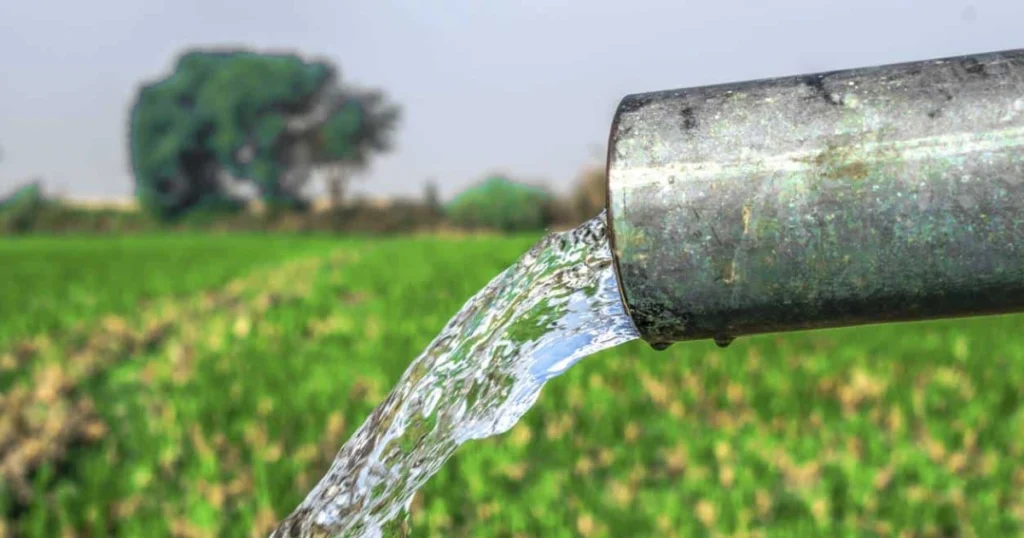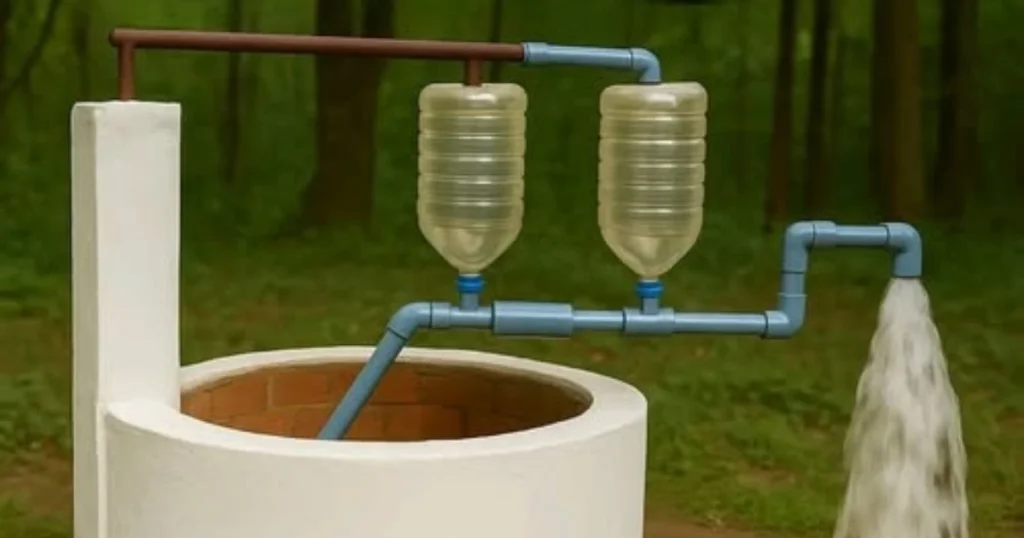Drawing water from a deep well can seem like a daunting task, especially if you wish to avoid relying on electricity. However, there are numerous traditional and ingenious methods that allow you to extract this vital resource autonomously, ecologically, and economically. These techniques are especially useful in rural areas, in permaculture settings, or during extended power outages.
As the world faces climate challenges and the push for self-sufficiency increases, rediscovering these methods is a real asset. Many enthusiasts already share their feedback on rustic, efficient systems on platforms like Jardin Rusé, where you can explore sustainable water collection practices such as rainwater harvesting — an excellent addition to secure your water supply.
If you’re interested in reducing your energy dependence, keep reading: this detailed step-by-step guide will walk you through the best solutions tailored to your deep well, along with maintenance tips and seasonal advice.
✅ Why Opt for Electricity-Free Methods?
Choosing electricity-free methods to pump water is more than just a trend; it’s a thoughtful decision that offers numerous benefits:
- Lower maintenance and energy costs: Manual pumps or hydraulic rams have few costly parts to replace.
- More eco-friendly and sustainable: No CO2 emissions, no reliance on the electrical grid.
- Self-sufficiency during power outages: In case of storms or grid failure, your water remains available.
- Minimal upkeep: These systems are simple, robust, and have been tested for decades.
For an in-depth comparison of manual and autonomous systems, you can refer to this resource on traditional wells to dive deeper into your options based on well depth and terrain configuration.

✅ Practical Solutions for Drawing Water from a Deep Well
Let’s explore some of the best solutions, along with their advantages and limitations:
1️⃣ PVC Manual Pump
- Simple to build and install
- Suitable for depths up to 10 meters
- Easy maintenance
- Budget-friendly
👉 This type of pump is perfect for shallow, family-use wells and remains the go-to choice for those on a tight budget.
2️⃣ Hydraulic Ram
- Uses the power of moving water
- No engine, no electricity
- Ideal for properties with continuous water flow (such as springs or streams)
- Low maintenance
👉 A hydraulic ram can be a great ally if you have a gravity-fed water source, as explained in this article on hydraulic ram systems.
3️⃣ Rope Pump
- Operates manually or by pedal
- Ideal for deeper wells (20 to 30 meters)
- Simple, proven technology
- Minimal wear and tear
👉 This is perfect for isolated villages with wells of up to 30 meters deep, providing good performance with minimal maintenance.
4️⃣ Manual Piston Pump
- Robust mechanism
- Effective up to 20 meters
- Easy-to-find standard parts
- Long lifespan
👉 A great compromise if you want reliability combined with performance, especially for wells that aren’t too deep.
5️⃣ Solar Pump
- Modern and autonomous
- Uses photovoltaic panels
- Ideal for sunny regions
- Almost zero network consumption
👉 Although it’s a bit more expensive to install, this solution is cost-effective over time, especially in isolated areas with ample sunshine.
✅ Essential Equipment Checklist 🛠️
To successfully set up your water extraction system, here’s a list of the necessary materials:
- Strong PVC pipes 🟦
- Durable rope 🪢
- Stainless steel or brass pistons 🧩
- Check valves 🛑
- Solar panels (for solar pumps) ☀️
- Grease for maintenance 🔧
Ensure the compatibility of each piece with your well’s depth and diameter before purchasing.
✅ Maintenance Tips to Keep Your System Running Smoothly
While these systems are simple, they still require regular care to ensure longevity and efficiency:
- Check the overall condition every 3 months
- Clean and grease moving parts
- Protect pipes and pumps from freezing in winter
- Test water flow to prevent clogging
Preventative maintenance avoids costly repairs and ensures uninterrupted access to clean water.
🚜 Common Mistakes to Avoid
While setting up a system like this, many beginners make mistakes that can lead to performance issues. Here are the common ones:
- Neglecting to clean the filters
- Forgetting to purge the pipes in winter
- Underestimating the actual depth of the well
- Choosing a pipe that’s too narrow, which slows water flow
- Installing the pump without a check valve
These mistakes are unfortunately common, but they are easy to avoid by carefully sizing your system and seeking advice from other enthusiasts (via forums or local artisans).
🌱 Benefits of Autonomous Water Systems
Opting for a water pumping system without electricity offers several key advantages:
- Environmental respect: Reduces your carbon footprint by eliminating the need for electricity.
- Minimal usage costs: The energy needed for the system is free, and maintenance is low-cost.
- Self-sufficiency: You won’t be dependent on the electrical grid or external factors like power outages.
- Convenience and community: Sharing water resources can strengthen local ties and ensure a steady supply.
🗓️ Seasonal and Regional Tips
1️⃣ In Winter: Insulate your pipes with foam or straw to protect against freezing.
2️⃣ In Summer: Keep an eye on the water level and adjust the suction height as necessary.
3️⃣ In Mountainous Areas: A piston pump is ideal for cold climates since it’s more resistant to freezing.
4️⃣ In Arid Climates: Solar pumps are perfect, as consistent sunlight ensures a steady supply of energy.
🧰 Checklist for Essential Tools & Materials
- ✅ Rigid PVC pipes
- ✅ Durable ropes
- ✅ Silicone grease
- ✅ Check valves
- ✅ Spare seals
- ✅ Solar panels (optional)
- ✅ Water intake filter
🙋♂️ FAQs
How do I maintain a manual pump?
Ensure the pistons are sealed, grease the joints regularly, and test the flow to keep everything running smoothly.
What’s the maximum depth for a rope pump?
Typically, rope pumps work well for wells up to 30 meters deep, providing adequate performance as long as the rope is taut and the pulleys are maintained.
Does a solar pump work on cloudy days?
Yes, but the flow rate may decrease. Consider using a buffer tank to make up for cloudy days.
Can I combine different systems?
Absolutely! Many farms use a solar pump during the summer and a manual backup pump during the winter.
😊 Conclusion
By opting for a pump system without electricity, you gain freedom and resilience while contributing to environmental preservation. Whether you choose a simple manual pump or a state-of-the-art solar solution, your water autonomy will be ensured, even in the event of a grid failure.
If this topic intrigues you, check out this article on well water filtration to ensure optimal water quality. Don’t forget to share your experiences in the comments — your input will help others take the leap toward a more self-sufficient lifestyle. 💙


Great blog here! Additionally your website so much up fast! What host are you using? Can I get your associate link for your host? I desire my website loaded up as fast as yours lol
Thank you for sharing with us, I conceive this website genuinely stands out : D.
I was reading some of your articles on this internet site and I conceive this website is very informative ! Keep on putting up.
Thank you for all of the labor on this web site. My aunt really loves conducting research and it’s really obvious why. My partner and i learn all of the powerful manner you provide functional ideas on this web site and improve contribution from other individuals on the situation plus our own simple princess is now learning a whole lot. Take pleasure in the remaining portion of the new year. You are carrying out a really good job.
https://t.me/iGaming_live/4869
Thanks – Enjoyed this post, can you make it so I get an update sent in an email every time there is a new article?